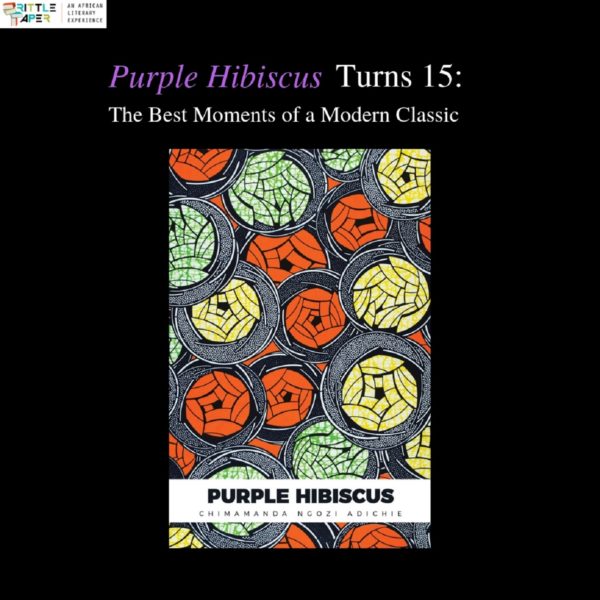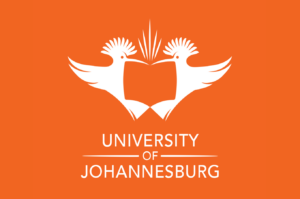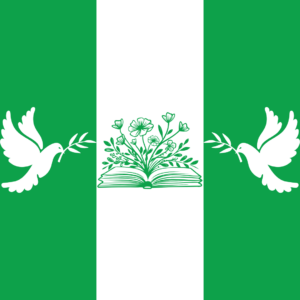
“It wasn’t the first novel I wrote,” Chimamanda Ngozi Adichie told the audience at the University of Nairobi, during her lecture in honour of Kwani? Magazine’s 10th anniversary, and then she joked: “I wrote other bad novels which I hope nobody ever sees. But Purple Hibiscus was the first one that I loved.” When she began sending out the manuscript, seeking an agent, she got many rejections, most of which weren’t about the story but about its setting. One agent told her: “I like your writing but nobody knows where Nigeria is. So why don’t you consider setting the story in America and”—this is her favourite part of the email, she said—“use the African material as background.” She was in a fit of desperation. “For a minute I thought: how can I do that? Because I was very desperate to be published.” But it was never going to work for a novel set entirely in Nigeria. So she held out until, finally, another agent, Diana Pearson Morris of Pearson Morris & Belt Literary Management, emailed her: “I like this and I’m willing to take a risk on you.”
But even after securing an agent, marketing her seemed problematic. “You’re not like anybody who’s writing now,” her agent told her. “If you were Indian, it would be easier to sell you because we could say you’re the new so-and-so. But you’re black, you’re not African American, you’re not from Haiti or Jamaica; we don’t know what to do with you.” She reflects: “I was very fortunate. I didn’t have any expectations for this novel. I was just, I was grateful that somebody wanted to publish it.”
Published by Algonquin Books on 30 October 2003, Purple Hibiscus took on a life of its own, collecting the Commonwealth Writers’ Prize for Best First Book and the Hurston-Wright Legacy Award, a shortlisting for the Orange Prize, and a longlisting for the Booker Prize; earning her association, endorsement, and admiration from J.M. Coetzee, Chinua Achebe, Salman Rushdie, Michael Ondaatje, and Peter Carey; and launching probably the most-talked about literary career of the present day.
To honour it on its 15th anniversary, and because it is surprisingly easy to underestimate its significance in the shine of Half of a Yellow Sun and Americanah, and even more so in her increasing feminism-induced celebrity, Brittle Paper lists the 16 best moments of the book that started it all.
October 2003: Purple Hibiscus Published in the U.S. by Algonquin Books
Founded in 1983 by American literary critic and writing teacher Louis D. Rubin, the New York-based publishing house began small. “I realized I didn’t just want to put people into print,” Rubin told the Los Angeles Times in 1989. “I wanted to launch them.” They stayed true to their mission when they acquired a manuscript by an unknown Nigerian writer from Pearson Morris & Belt Literary Management, and the 307-page book took off on its own, slowly but surely, through that most efficacious of publicities: word-of-mouth. Purple Hibiscus was published in the U.K. by Fourth Estate on 1 March 2004, and Chimamanda then signed with the Wylie Agency’s Sarah Chalfant. The praise was swift. The Times called it “immensely powerful.” In his blurb, J. M. Coetzee called it “A sensitive and touching story.” But it was Jason Cowley, Literary Editor of The New Statesman, who first reached high: “Purple Hibiscus,” he wrote, “is the best debut I’ve read since Arundhati Roy’s The God of Small Things.” Algonquin Books has since, it seems, maintained some publishing rights to the book through their parent company Workman Publishing, having released their most recent edition in 2012.
January 2004: The Washington Post Calls Her “The 21st Century Daughter of…Chinua Achebe”
In a 2004 review for The Washington Post, Yale University lecturer Bill Broun offered the tag that connected the most with the literary world. “Adichie is at her best in giving the traumatized Kambili a playful individual dignity that challenges the humorless power-mongering of her father and her country’s dictators,” he writes. “As Adichie later suggests, however, political truth has limitations. In this thinking, she is very much the 21st-century daughter of that other great Igbo novelist, Chinua Achebe.”
April 2004: Shortlisted for the Orange Prize for Fiction
“An unknown 26-year-old Nigerian writer whose first novel was published in this country only last month has forced her way on to the shortlist for the Orange Prize for Fiction,” wrote the UK’s The Telegraph. “It is the instant recognition for Adichie…that will be watched closest.” It was, wrote UK’s The Guardian, “the most formidable shortlist of any book contest this year—a list stronger in depth than at the final stage of either the Booker or Whitbread prizes.” The then John Hopkins masters student was up against Margaret Atwood’s Oryx and Crake, Shirley Hazzard’s The Great Fire, Rose Tremain’s The Colour, Gillian Slovo’s The Ice Road, and eventual winner Andrea Levy’s Small Island. “As soon as I read her manuscript I thought that she was a very serious talent,” said her Fourth Estate editor Mitzi Angel. “I told her over the phone that she was on the shortlist and she screamed.” Chimamanda’s reaction: “I’m surprised and think it’s wonderful that a novel written by a black African woman has made it to the shortlist. I couldn’t be more thrilled.” The shortlisting, she would later say, was what really launched her career. It was the first of three and made her the first African to be shortlisted.
July 2004: First Book Event in Nigeria
In November 2003, having relocated from London to Lagos and looking to promote cultural production in Nigeria, Ebun Olatoye and Yemisi Aribisala, now author of the award-winning food memoir Longthroat Memoirs, met to discuss how to improve the online presence of Mukhtar Bakare’s Farafina magazine. Olatoye came with copies of Purple Hibiscus and her enthusiasm was so great that the team decided to organize a Lagos event for the still-unknown-a-home novelist. “Purple Hibiscus drew us in: Nigeria had a new talent,” read a reflection on Cassava Republic’s Website. “We agreed with Ebun that Adichie must be widely known in Nigeria. Jeremy wrote the first review of Purple Hibiscus and had it published in The Guardian a few days later.” The event, featuring performances by Fatai Rolling Dollars and a then unknown Asa, saw Jeremy Weate—who would eventually co-found Cassava Republic Press—interview the new writer. “There was a sense of a new cultural moment everyone in the audience felt,” the reflection read. “That night and all the activities leading up to it placed both Farafina and Chimamanda in the minds of Nigerians. In our view, it was also what led to the birth of NLNG’s involvement in literature as Yemisi Ogbe drafted a proposal for Farafina to organise the NLNG event. The energetic and fluid way Yemisi and Ebun worked together to put Farafina and Adichie on the map is a constant reminder of what women can do to support other women.” Adichie’s reading tour further took her to Ibadan, Abuja, and Nsukka.
August 2004: Longlisted for the Man Booker Prize
Purple Hibiscus was one of six debut books on the 22-title Man Booker Prize 2004 longlist. Also listed were Achmat Dangor’s Bitter Fruit, Sarah Hall’s The Electric Michelangelo, Shirley Hazzard’s The Great Fire, David Mitchell’s Cloud Atlas, Colm Tóibín’s The Master, and eventual winner Alan Hollinghurst’s The Line of Beauty. Curiously, it remains her only Booker Prize nomination.
2004: Kachifo Limited Launches with Nigeria Publication
A believer in quiet revolutions, bank executive Mukhtar Bakare left his job in finance for a career in publishing fiction, and so began the story of Kachifo Limited in Nigeria. His company’s literary fiction imprint, Farafina Books, named after the magazine he began in 2002, Farafina (“Farafina” is a Bambara word that roughly translates to “Africa”), debuted with the publication of Purple Hibiscus, creating a literary sensation never before seen in the country. Early this year, however, Chimamanda switched Nigerian publishers, signing with the newly formed Narrative Landscape who then launched their print publishing with new editions of her six books.
October 2004: Wins the Hurston-Wright Legacy Award
Nearly a year after it was published, Purple Hibiscus received its first major award. The $10,000-per-category Award, which is for black writers and was then in its third year, chose the novel as its best debut fiction book, ahead of Stephanie Allen’s A Place Between Stations, April Reynolds’ Knee-Deep in Wonder, Asha Bandele’s Daughter, ZZ Packer’s Drinking Coffee Elsewhere, and Suzan-Lori Parks’ Getting Mother’s Body. The other winners were Wil Haygood’s In Black and White: The Life of Sammy Davis, Jr., for nonfiction, and Mat Johnson’s Hunting in Harlem, for fiction.
April 2005: PEN World Voices Festival Conversation with Michael Ondaatje
For her first PEN Festival event, Chimamanda scored a conversation with Booker Prize winner Michael Ondaatje, whom she looked up to. Themed “Reinventing Home,” the chat was introduced by two-time Booker Prize winner Peter Carey. Ondaatje asked her about Purple Hibiscus and she asked him about The English Patient, in an encounter which left her fan-girling. In a 2015 profile of her, Vogue mentioned Salman Rushdie’s initial impression of her from the Ondaatje conversation. “At the time she was just out of the egg, so to speak, and it was plain that she hugely admired Ondaatje,” he said, “but what was striking was her own confidence and authority. She very much held her own, and spoke fluently and powerfully, and all of us there that day could see that someone very remarkable had just arrived. A star is born, I remember thinking, and so it was.” Ten years after her first appearance at the festival, she was co-curated its 2015 event.
April 2005: Wins Commonwealth Writers’ Prize for Best First Book
Purple Hibiscus scooped its second major award with the defunct Commonwealth Writers’ Prize for Best First Book, beating other regional winners including David Bezmozgis’ Natasha and Other Stories, Rupa Bajwa’s The Sari Shop, and Larissa Behrendt’s Home. “Chimamanda Adichie’s work effectively portrays the cutting effect of the twin legacy of colonialism, evangelical Catholicism and a weak political infrastructure, at a time when Nigeria seemed to be falling apart under the pressures of a military coup,” stated chief judge Daniel Massa. “The novel moves smoothly and fluently to depict the sensibilities of young Kambili and her brother as they react to love, cultural dislocation, political oppression and domestic violence in their search for personal freedom. This is an impressive first novel that transcends national relevance.”
November 2005: Shortlisted for the John Llewellyn Rhys Prize
Two years after publication, Purple Hibiscus received its fifth major award nomination: a finalist spot for the now-suspended John Llewellyn Rhys Prize, the UK’s second oldest literary award. For the £5,000 recognition for writers under 35, it was up against Rory Stewart’s The Places In Between, Neil Bennun’s The Broken String, Colin McAdam’s Some Great Thing, Anthony Cartwright’s The Afterglow, and eventual winner Jonathan Trigell’s Boy A.
August 2006: Reaction to Chinua Achebe Liking the Novel
In a profile of her following the publication of Half of a Yellow Sun, she told The Independent about her reaction to receiving an email from Achebe’s son telling her that Achebe liked Purple Hibiscus. “I was sitting in an internet café,” she told them, “and I was about to pass this one by when I clicked on it and saw it was from Chinua Achebe’s son, Chidi. ‘Daddy read your Purple Hibiscus and loves it,’ he said. I couldn’t believe it!” Achebe, of course, had by then given her the supreme endorsement via a blurb for Half of a Yellow Sun: “We do not usually associate wisdom with beginners, but here is a new writer endowed with the gift of ancient storytellers. . . Adichie came almost fully made.”
2011-2015: Inclusion in WAEC Syllabus
When, for its 2011-15 syllabus, the West African Examination Council (WAEC) included Purple Hibiscus as one of its two African Prose texts—the other being Asare Konadu’s A Woman in Her Prime—it turned what was already a very popular novel into arguably the widest-read, biggest-selling major novel by a Nigerian author in Nigeria since the turn of the century. But the book didn’t become ubiquitous simply because it was on the syllabus—it became so because its inclusion accelerated its already racing piracy rate.
November 2013: Recounts Publication Struggle During “Kwani? at 10” Lecture
At the University of Nairobi, during the aforementioned event to mark the tenth anniversary of Kwani?, Chimamanda spoke about her struggle to get Purple Hibiscus published. “It wasn’t the first novel I wrote,” she said, before joking, “I wrote other bad novels which I hope nobody ever sees. But Purple Hibiscus was the first one that I loved.” Watch the video HERE.
November 2014: Fourth Estate’s “30 from 30” Tribute
Chimamanda’s UK publishers, Fourth Estate, asked their staff to write 30 words each on one of 30 chosen titles published by them. Writing on Purple Hibiscus was Irish writer Hugo Hamilton, author of Every Single Minute: “Purple Hibiscus remains unforgettable for the way in which it holds the inner family tyrannies up against the outer political landscape of Nigeria and the world, freeing a great writer.”
April 2017: “One Book, One Maryland” Win
Weeks after Americanah won the “One Book, One New York” initiative, allowing it to be read across the US State of New York simultaneously, Purple Hibiscus won the “One Maryland, One Book” initiative. The initiative, organised for the US State of Maryland, was in its tenth year, and the 2017 selection—by a committee of educators, librarians, authors, and bibliophiles who considered more than 120 books—was based on theme of “Home and Belonging.” Maryland Humanities Executive Director Phoebe Stein stated: “Purple Hibiscus—a powerful coming-of-age novel that explores this year’s theme of home and belonging, along with resonant themes like faith, family, and freedom—will no doubt spark illuminating conversations throughout Maryland.” Chimamanda, who undertook a tour to promote the novel in the state, said: “I’m pleased and honored that Purple Hibiscus will be read by many people in the state I call my American home. Literature should ‘instruct and delight’ and I truly hope Marylanders will enjoy reading it.” It was a timely return to the Great Adichie Novel conversation, as the novel’s shine seemed to have been left behind by the massive successes of her sister books, Half of a Yellow Sun and Americanah.
September 2018: Novel Gains New Life as Purple Hibiscus Trust Workshop
In 2017, in what should have been its tenth edition, Chimamanda announced that her annual workshop would not be held because there were no sponsors. Began in 2008, the event, branded as the Farafina Trust Creative Writing Workshop with her as Creative Director, had run with different sponsors at different times. This year, the workshop returned rebranded: the Purple Hibiscus Trust Creative Writing Workshop sponsored by multi-platform media and entertainment company Trace Nigeria. “The workshop, which is currently in its 11th year, will continue to provide me the opportunity to contribute to the growth of the writing community in Nigeria,” Chimamanda said. “It will also serve as a platform for writers to learn from one another and from established writers.” Sam Onyemelukwe, Managing Director of Venator Partners/Trace Nigeria, stated: “We are very pleased to partner with Chimamanda Ngozi Adichie. She is an inspiration to youth in Africa and around the world; and through her art, she not only entertains but challenges stereotypes and kindles conversations that would often otherwise not be had.”
October 2018: Purple Hibiscus Turns 15
Graph image by Ecrivain.









Henry July 19, 2019 08:02
Wonderful piece on a wonderful novel, though I still see HOAYS as Adichie's magnum opus.